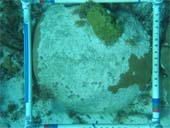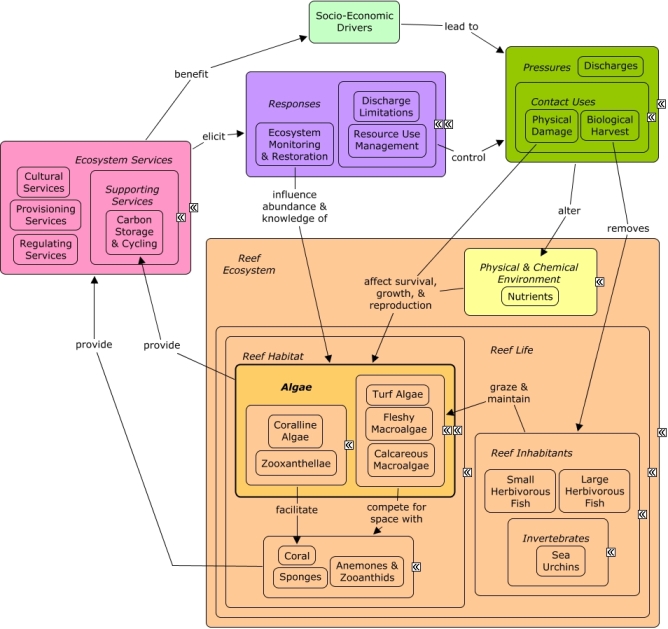ReefLink Database

Turf Algae
Turf algae is a type of low growing algae in reefs.
CMap

CMap Description
Macroalgae and turf algae compete for space with coral, sponges, and other species. Excess nutrients may alter competitive interactions among algae and coral. Many fishes and invertebrates are key grazers, helping to maintain algae and prevent it from overgrowing coral. A number of algal species, including calcareous macroalgae and crustose coralline algae, deposit calcium carbonate during growth, and may contribute to reef structural strength. Crustose coralline algae may help facilitate recruitment of stony coral. Algae are primary producers, and provide some habitat and resources for marine fish and invertebrates, however often not to the same degree as coral reef habitat. As a result, overgrowth of coral reefs by algae will likely result in a loss of ecosystem goods and services. Many of the sectors which benefit from reef ecosystem services also contribute to algal overgrowth through pollution and overfishing. Monitoring, mapping, and scientific research can be used to track the distribution and abundance of algae, and to understand competitive interactions between coral, algae, and other species.Citations
More than 50 citations. Click here to load.
| Citation | Year | Study Location | Study Type | Database Topics |
|---|
Management Options
| Management Option | Description | Sources | Database Topics |
|---|---|---|---|
| Restoration: Removal of Invasive Algae | Benthic organisms on reefs maintain a delicate balance competing for space. In many areas, the competition between coral and algae has fallen out of balance due to confounding factors. Factors such as decreased herbivorous fish and invertebrates, and invasive algae species have allowed faster growing algae to take over many reefs, often growing into smothering mats that cover and kill coral. In Hawaii, there has been some success physically removing invasive algae such as Kappaphycus using underwater vacuums extended down from barges or volunteer events in shallower areas. | The Nature Conservancy. 2010.Two Million Pounds of Invasive Algae Removed From Maunalua Bay. (not cited) |
Algae; Aquaculture; Biological Addition; Biological Harvest; Biological Monitoring & Restoration; Biological Monitoring, Mapping, & Scientific Research; Calcareous Macroalgae; Collaboration & Partnering; Coral; Coralline Algae; Decision Support; Ecosystem Monitoring & Restoration; Escape & Release of Non-natives; Fishing & Harvesting Management; Fishing Sector; Fleshy Macroalgae; Hydrocoral; Invasive Species; Large Herbivorous Fish; Octocoral; Reef Habitat; Skeletal Coral; Small Herbivorous Fish; Stony Coral; Turf Algae; Wetland & Reef Restoration; Zooxanthellae |
Laws
| Legal Citation | Purpose of Law | Management Organization | Database Topics |
|---|
